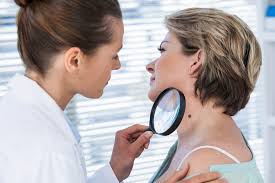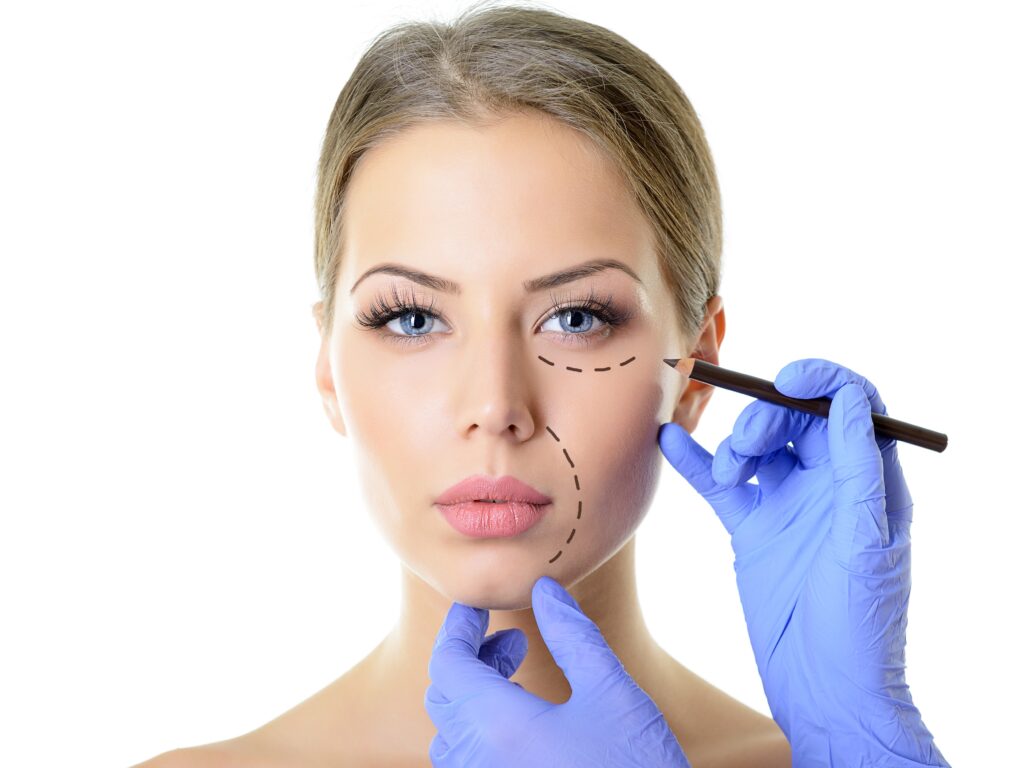When is it Time to See a Dermatologist?
Seeing a dermatologist for the first time might not be something that most people are inclined to do. You might not think you have a serious condition or something to be worried about, so you might just prefer to ignore the problem and let it heal on its own. So how exactly do you know that it is time to see a dermatologist? If you are asking yourself any of the following questions, then it might be time to check in with a dermatologist:
What is this stubborn rash and why won’t it go away?
When over-the-counter creams or lotions won’t heal a stubborn rash, then it might be time to book an appointment. Diagnosing a rash yourself can be difficult because most rashes look the same to the untrained eye, whereas dermatologists are trained to understand the different shapes and patterns of rashes, and what those various rashes might be.
Why are my nails becoming a different color?
Nail discoloration is frequently a sign of fungal infections, although this can also be a sign of nutritional deficiencies, aging, medications, and various diseases. If this happens to you, you’ll want to visit a dermatologist to understand and treat your exact problem.

What is this new spot on my body?
New moles or changes in old moles are signs that you need a professional evaluation from a dermatologist. These can be signs of cancer, and detecting cancer as early as possible is the best way to defeat it.
Why has my skin become extra sensitive and also dry?
As you get older, the immune system of your skin gradually weakens due to environmental factors like pollens and UV rays. An annual screening with a dermatologist is the best way to understand the exact cause of your skin drying out and becoming sensitive.
Why won’t my acne go away?
Most people experience at least some form of acne, but for an unlucky few, acne can stick around longer than normal. In other cases, while your acne may go away, it may also leave you with acne scarring. Dermatologists have acne treatments, medications, and products specifically designed for any level of acne or acne scarring.

What you can expect from your first visit to the dermatologist
A dermatologist is useful for so many different reasons. If you are a teenager experiencing dreaded acne, you may visit a dermatologist to get that cleared up. If you are experiencing issues with your skin other than acne, a dermatologist will be able to address that as well.
If you’ve never been to a dermatologist, you may not know what to expect from your first appointment. But don’t worry, this article has you covered. Here’s what you can expect from your first visit to a dermatologist.
The first thing you can expect is your dermatologist to ask you questions about your medical history. It’ll be pretty similar to a visit with your primary doctor. You’ll have to tell them if you are on any medications, if you’ve had any surgeries, if you currently suffer from any medical condition, if you have any known allergies, and so on. If your doctor doesn’t know your medical history, they won’t be able to fully treat your acne or skin problems. If you are worried that you’re going to forget all of the information they will need to know, write it down before your visit and bring the paper with you.
The next thing you can expect from your dermatologist is they’ll probably look at your skin for things other than acne. Since you’ve never been to the dermatologist before, you’re probably unfamiliar with the fact that they are able to practice medical dermatology. This means they are able to check for things like cancerous moles or other suspicious marks on your body. Forms of skin cancer are very common. In fact, about 178,560 cases of melanoma will be diagnosed in the U.S. in 2018. So, don’t be surprised if they ask you to put a robe on. It’s completely normal.
If you went to the dermatologist for a specific reason like acne treatment, you can usually expect to leave the office that day with a prescription in hand. Since it will likely be a medication you’ve never used before, make sure you take the time to talk with your doctor about what it is, what it’s being used for, and how to use it properly. If you don’t fully understand how to use the medication, chances are you’re going to be using it wrong and not see the results you desire.
Finally, your dermatologist will probably want to see you back in the office again in a few months. They will likely ask you to come back for a routine checkup to see how everything is going. You can use that as an opportunity to talk to them about continuous problems or to try a completely different treatment approach.

How Do I Prepare for a Dermatologist Appointment?
1) Check with your insurance provider
Most insurance plans cover dermatology visits but keep in mind that cosmetic treatments such as CoolSculpting, Botox or other injectables, are likely not covered by insurance.
Review your health insurance policy or call your insurer before you book an appointment to understand any costs that may be associated with your visit. Insurance providers typically provide coverage for treatments for chronic skin conditions like psoriasis, acne, eczema, and cancer. Other skin conditions that are typically covered by insurance include fungal, bacterial or viral skin infections, rashes, hives, allergies, and warts.
2) Prepare your questions beforehand
Start your visit knowing exactly what you may want to ask. Make a full list of concerns, pre-existing medical conditions, any medication used, and family history to give your doctor context. Also mention any previous skin diseases you’ve experienced, including seasonal ones.
Listing your concerns before your appointment ensures that you get the most out of your dermatological visit, instead of forgetting your most urgent questions and only remembering them once you’ve stepped out of the clinic.
With extra information prepared in advance, your dermatologist will have a better understanding of your medical background, skin issues, and any treatments you’ve received, which will allow your doctor to provide a treatment plan moving forward.
3) Don’t expect quick fixes
Too many patients go into dermatology clinics thinking a quick treatment or appointment will completely transform their skin. If you’re undergoing treatments for chronic skin conditions, expect some trial and error before you get the results you actually want.
Keep in mind that different patients experience varying results. Someone with your exact skin type might get amazing results in minimal time, while you might have to wait weeks before seeing the slightest improvement. Even then, in some circumstances, the most that your dermatologist might be able to accomplish is just getting your condition under control.
During your dermatology visit, always ask what you can expect from the treatment so you can set proper expectations. Expect to book follow-up visits so your doctor can reassess your treatment plan and decide if you need to add, remove, or swap any of your existing medication or dermatological procedures.
4) Research your injectables
Cosmetic procedures require just as much research as medical procedures, if not more. The compounds in injectables might not react well with certain medications or diets, which is why it’s important to provide a full medical and personal background to your dermatologist.
Avoid the risk of experiencing side effects by properly preparing for your cosmetic treatments.
Important Dermatologist Visit Reminders
Are you going to a dermatologist appointment for the first time? Make your appointment as smooth as possible by following these guidelines:
1) Wear the Gown
Make physical exams easier by undressing and wearing the examination gown provided to you. Dermatologists ask you to wear a gown for two reasons: Without clothing, your dermatologist can accurately inspect your body. Also, your dermatologist can inspect one body part and then another without having to fiddle with your clothing.
The next time you’re up for a dermatology visit, dress down and use the examination gown for a smoother check-up.
2) Take Note of What You’re Using
Dermatologists might be skin experts, but you can’t expect them to know every topical or oral treatment that exists. Whenever you’re consulting about a specific product, always make sure that you have a photo of the product, including the product name, its medicinal strength, and any other chemical compositions.
In dermatology, two seemingly identical creams can have strengths that differ by just 1% to 5%. This difference alone can yield entirely different results, which is why it’s crucial to take note of what product you’re using.
3) Skip the Nail Polish
Your nails can inform your dermatologist about underlying health problems. For instance, the shape of your nails can be a signal of deficiencies and other health conditions that would otherwise remain hidden, both related to dermatology and your overall health.
4) Use Your Skincare Products
Too many patients make the mistake of thinking that dermatologists want to see their “bare faces.” While it’s true that you shouldn’t go to your dermatology appointment with layers of thick makeup, this doesn’t mean you should also skip your daily skincare regimen. This is especially true if you are using prescription medicine to treat certain skin conditions. Ultimately, your dermatologist will want to assess how your skin is reacting to the medication.
On the day of your appointment, don’t neglect to apply any serums, creams, and whatever else you use on a daily basis unless specified otherwise. When in doubt, you can always call ahead of your appointment and verify if there will be tests that require you not to put anything on your face.



